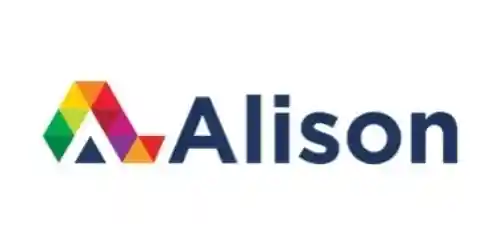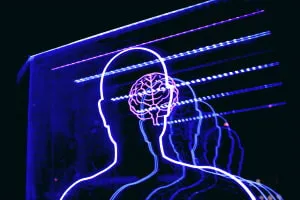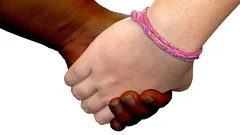
Understanding Child Language Disorders 
Get a comprehesive understanding of Understanding Child Language Disorders. This is a free course from Alison. AZ Class provides this course data for free. Learn more certificate and details here. Discover the fascinating world of child language disorders with this comprehensive course. Language disorders are a common cause of communication, social interaction, and learning difficulties in children. Explore the structured process of language development and gain insights into the different types of language disorders. From pragmatic language disorder to phonological deficits, this course covers it all. Dive into the causes and symptoms of language disorders, as well as the effects of conditions like Down syndrome and autism spectrum disorder. Learn how to support children with language difficulties and help them succeed academically. Enroll now and make a difference in a child's life. ▼
ADVERTISEMENT
Course Feature
![]() Cost:
Cost:
Free
![]() Provider:
Provider:
Alison
![]() Certificate:
Certificate:
No Information
![]() Language:
Language:
English
Course Overview
❗The content presented here is sourced directly from Alison platform. For comprehensive course details, including enrollment information, simply click on the 'Go to class' link on our website.
Updated in [October 07th, 2023]
What does this course tell?
(Please note that the following overview content is from the original platform)
Language disorders in children are one of the most common causes of their difficulties with communication, social interaction and learning. Learning a language is generally a structured process but not all children develop all linguistic abilities in the same way or at the same pace. The ability to learn a language is considered an inherent human ability but children with a language disorder have difficulty understanding what they hear or read. They also face challenges when expressing themselves.
This childhood development course examines different forms of child language disorders and describes the timeline for normal language development in children. We first identify the five components of language and the types of child language disorders. We then study the causes and symptoms of language disorders in children. We go through the structured process that drives normal language development from the prelinguistic period to the preschool and early school years. Similarly, we investigate specific language disorders such as pragmatic language disorder and morphosyntactic, phonological and semantic deficits.
The following section examines different types of language impairment that can result from brain damage after birth. We cover subjects like acquired childhood aphasia, preschool language disorder, autism spectrum disorder and other acquired childhood language disorders. We then discuss the causes and effects of Down syndrome, Fragile X syndrome, Williams syndrome, learning disabilities and communication disorders. Finally, we present seven-step guidelines for helping children with language difficulties to achieve success in their academic studies. Sign up for this child psychology course to study how language disorders can disrupt childhood development and learn how to help them overcome such difficulties.
We considered the value of this course from many aspects, and finally summarized it for you from two aspects: skills and knowledge, and the people who benefit from it:
(Please note that our content is optimized through artificial intelligence tools and carefully reviewed by our editorial staff.)
What skills and knowledge will you acquire during this course?
During this course, learners will acquire the following skills and knowledge:
1. Understanding of different forms of child language disorders: Learners will gain knowledge about the various types of language disorders that children may experience, including pragmatic language disorder, morphosyntactic deficits, phonological deficits, and semantic deficits.
2. Knowledge of the causes and symptoms of language disorders in children: Learners will learn about the factors that can contribute to language disorders in children and the common symptoms associated with these disorders.
3. Understanding of the timeline for normal language development in children: Learners will gain insight into the structured process of language development from the prelinguistic period to the preschool and early school years.
4. Familiarity with specific language disorders resulting from brain damage: Learners will explore language impairments that can occur as a result of brain damage after birth, such as acquired childhood aphasia and preschool language disorder.
5. Knowledge of language disorders associated with specific conditions: Learners will study language disorders associated with conditions like autism spectrum disorder, Down syndrome, Fragile X syndrome, Williams syndrome, learning disabilities, and communication disorders.
6. Understanding of strategies to help children with language difficulties: Learners will be introduced to seven-step guidelines for supporting children with language difficulties in achieving success in their academic studies.
By completing this course, learners will develop a comprehensive understanding of child language disorders and gain practical knowledge to help children overcome these difficulties in communication, social interaction, and learning.
Who will benefit from this course?
This course will benefit individuals who work with children, such as teachers, speech-language pathologists, psychologists, and parents. It will also be useful for individuals studying child psychology or related fields.
Course Syllabus
A Study of Language Disorders in Children
In this module, we outline the components, causes, risk factors, and possible solutions to language disorders in children. We identify the signs and symptoms of language difficulties. In addition, we will show you how to diagnose, treat, and provide moral support for children with language disorders.Course assessment
Course Provider

Provider Alison's Stats at AZClass
Discussion and Reviews
0.0 (Based on 0 reviews)
Explore Similar Online Courses

Psychiatric Disorders and Treatment

Traditional Irish Sean-nos Singing Beginner 1

Python for Informatics: Exploring Information

Social Network Analysis

Introduction to Systematic Review and Meta-Analysis

The Analytics Edge

DCO042 - Python For Informatics

Causal Diagrams: Draw Your Assumptions Before Your Conclusions

Whole genome sequencing of bacterial genomes - tools and applications

Autism at Work - Managing Autism in The Workplace

Unleash The Positive Mind - Be an Autism Power Parent


Start your review of Understanding Child Language Disorders